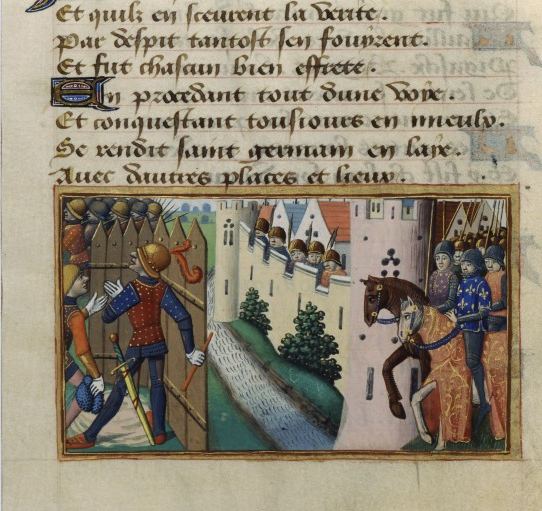 | ||
Siege of calais 1436
The Siege of Calais between June and July 1436 was a failed siege of English-held Calais by Philip the Good, Duke of Burgundy and Flemish militia.
Contents
- Siege of calais 1436
- Il 2 sturmovik cliffs of dover the siege of calais day 2 bf 109
- Prelude
- The siege
- Aftermath
- References
Il 2 sturmovik cliffs of dover the siege of calais day 2 bf 109
Prelude
England and Burgundy had been allies against France in the Hundred Years' War since 1415.
But when the English walked out of peace talks during the Congress of Arras in 1435, the Duke of Burgundy stayed and concluded the Treaty of Arras with the French King, thus switching sides in the war. The English were outraged because of the Duke's betrayal, and the London populace was allowed the plunder possessions of Flemish, Dutch and Picard merchants in the city, all subjects of the Duke of Burgundy. There was also an incursion in the Duke's territories by an English force of 2000 men, who defeated 1500 Flemish soldiers under Jean II de Croÿ in the Boulonnais.
Philip the Good reacted by declaring war on England. In this, he was supported by the Flemish cities, who saw their trade with England menaced.
The siege
The obvious target of the Duke was Calais. He first conquered some smaller English strongholds, like Oye castle, where he hanged part of the garrison, Sangatte and Balinghem. In June he started the siege of Calais, supported by large numbers of Flemish and Picard militia. The Flemish cities in fact saw a chance to deal with the Calais Staple. In total, the Duke had some 30,000 men at his disposal. He also sent a force under Jean II de Croÿ to besiege Guînes.
The militia had been very eager to take Calais quickly, but when after a few weeks it became apparent that the city, under the command of Edmund Beaufort, 2nd Duke of Somerset, was well defended and provisioned, the enthusiasm quickly decreased. When a fleet under Admiral John of Horne failed to block the harbor of Calais by sinking five to six ships laden with stone, the Flemish army started to disintegrate.
When an English relief army of some 10,000 men under Humphrey of Lancaster, 1st Duke of Gloucester approached, the Duke of Burgundy had no option but to raise the sieges of Calais and Guînes and withdraw.
Aftermath
The failed siege was a humiliating defeat for the Duke. Skirmishes with the English and English piracy seriously disturbed the Flemish economy in the following years. But as the English economy also depended on trade with Flanders, peace was finally concluded in 1439.
Calais remained under English control until 1558.
